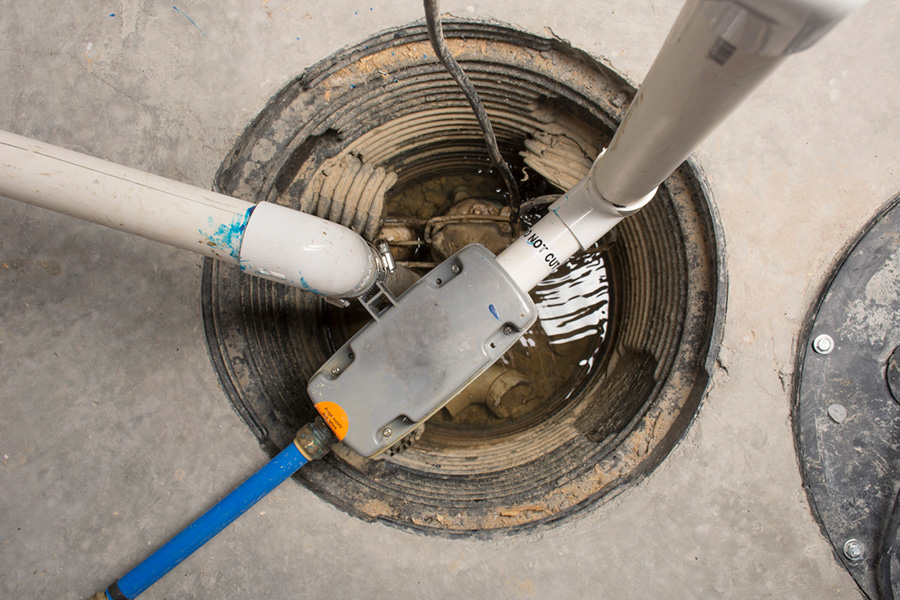Serving Nashville and the Middle Tennessee Area

How To Test Your Sump Pump System
Your sump pump plays a critical role in protecting your home from water damage by keeping your basement dry. If your sump pump fails to activate when heavy rain hits or if it’s not working efficiently, your home could face significant flooding and costly repairs. That’s why it’s essential to regularly test your sump pump system and ensure it’s functioning properly. The Maynard Man is here to show you how to properly test your sump pump to ensure it’s ready when you need it most. In this blog, we’ll walk you through the steps to test your sump pump, as well as highlight common issues to watch for. A little maintenance now can save you from a big headache later.
Why Testing Your Sump Pump is Important
Testing your sump pump system regularly is essential for preventing flooding and avoiding water damage in your home. Here’s why it’s so important to test your pump:
- Prevents flooding and water damage in your home: A properly functioning sump pump ensures that water is pumped out of the pit and away from your home, preventing basement flooding. A failure to test the pump can lead to undetected issues, leaving your home vulnerable to water damage during storms.
- Saves you from costly repairs and downtime: A sump pump that fails during a heavy rainstorm can result in extensive damage. Testing your pump periodically can help identify issues before they cause major problems, saving you from expensive repairs and the need for urgent replacements.
- Ensures the pump is working at peak efficiency: Like any mechanical system, sump pumps can wear out over time. Regular testing ensures the pump is working efficiently, ready to tackle any water buildup when you need it most.
Steps to Test Your Sump Pump System
Testing your sump pump is a simple process that can help ensure it’s ready to work when you need it most. Follow these steps to properly test your system:
Step 1: Check the Power Source
Before testing the pump, make sure it’s plugged in and connected to a working power source.
- Ensure the pump is plugged into a grounded outlet.
- Verify that the circuit breaker is in the “on” position and hasn’t tripped.
- Inspect the power cord for any visible signs of wear or damage that could prevent the pump from operating.
Step 2: Inspect the Discharge Pipe
The discharge pipe carries the water away from the sump pit, and any blockages or damage can prevent the pump from working efficiently.
- Check that the discharge pipe is free from any obstructions, such as debris, leaves, or ice.
- Look for any leaks, cracks, or other signs of damage along the pipe that could cause water to leak before it’s pumped away.
Step 3: Test the Float Switch
The float switch is responsible for activating the sump pump when water rises in the pit. If it’s stuck or malfunctioning, the pump might not turn on.
- Check that the float switch is not obstructed by debris or stuck in place.
- Ensure the switch is properly positioned so that it can trigger the pump when the water level rises.
- Test the float by gently moving it up and down to ensure it operates smoothly.
Step 4: Test the Pump’s Performance
Now it’s time to check if the pump is working efficiently.
- Pour a few gallons of water into the sump pit to simulate a heavy rainstorm.
- Observe the pump to see if it activates and begins to remove the water.
- Monitor the system to ensure that it empties the pit quickly and completely, with no issues or delays.
Step 5: Listen for Unusual Noises
While the pump is running, listen carefully for any strange sounds that could indicate a problem.
- If you hear rattling, grinding, or buzzing noises, it may indicate loose parts or debris inside the pump.
- Unusual sounds can also be a sign of wear and tear on the pump’s motor or other components.
Common Sump Pump Issues to Watch For
Even if your sump pump is working properly during testing, there are a few common issues that can arise over time. Being aware of these potential problems can help you catch issues early and keep your system running smoothly:
- Clogged discharge pipes: Over time, debris like dirt, leaves, and other materials can clog the discharge pipe, preventing water from being pumped out effectively. Regularly inspect and clean the discharge pipe to ensure it remains clear.
- Stuck float switch: The float switch can become stuck or obstructed by debris, preventing it from activating the pump. Make sure the switch moves freely and isn’t tangled in anything. A malfunctioning float switch may require cleaning or replacement.
- Pump not turning on: If the pump doesn’t turn on during testing, it could be a power issue, a malfunctioning float switch, or a problem with the pump motor. Check the power source and inspect the pump for signs of electrical or mechanical failure.
- Pump runs continuously: If the pump runs continuously without shutting off, it could be due to an improperly set float switch or debris inside the system. This issue can lead to excessive wear on the pump and should be addressed immediately.
- Water level in the pit is not lowering: If the water isn’t being pumped out effectively, there could be a clog in the pump or discharge pipe, or the pump itself may need maintenance. If this happens, check for blockages or debris inside the pump and clean the system as needed.
When to Call Maynard Plumbing, Heating, Cooling
If you notice any of the issues mentioned above, it’s important to call in the professionals for a thorough inspection and repair. The Maynard Man is here to help with all your sump pump needs. Here are some situations when it’s time to call Maynard Plumbing, Heating, Cooling:
- If your pump doesn’t turn on during testing: If the pump fails to activate or doesn’t remove water efficiently, it could be a sign of an electrical issue or mechanical failure that needs professional attention.
- If your sump pump is making unusual noises: Grinding, rattling, or buzzing sounds could indicate internal damage or debris inside the pump. Professional servicing is required to prevent further damage.
- If you notice water damage or flooding: If your sump pump fails during a storm and you experience flooding, call for immediate repairs. Addressing the problem quickly can minimize water damage and prevent mold growth.
- If your pump runs continuously: If the pump doesn’t shut off or is cycling on and off too frequently, it may be due to an incorrectly set float switch or another issue that requires professional adjustment.
- If your pump is old or worn out: If your sump pump is nearing the end of its lifespan, it’s time to replace it with a newer, more efficient model. Regular maintenance can help extend the life of your pump, but older units may need replacement to ensure optimal performance.
The Maynard Man can help diagnose and repair any issues with your sump pump, ensuring it’s working properly to protect your home.
Wrap-Up: Keep Your Sump Pump Ready for Action
Regularly testing and maintaining your sump pump is essential to prevent flooding and water damage in your home. By checking the power source, inspecting the discharge pipe, testing the float switch, and monitoring the pump’s performance, you can ensure your sump pump is ready to protect your home when the weather turns. Don’t wait until a storm hits—take proactive steps now to keep your sump pump functioning properly. If you notice any issues or need assistance with your sump pump system, Contact Maynard Plumbing, Heating, Cooling today to schedule a professional inspection, repair, or replacement. Let us help you keep your home dry and safe all year long.
Recent News
5 Signs Your Water Heater Needs Repair Before Winter Arrives in Nashville
How Regular Drain Cleaning Can Prevent Costly Plumbing Emergencies
High-ROI Home Improvements in Nashville
Energy Efficiency & Indoor Air Quality Blueprint for Tennessee Homes
Home Heating and Cooling Options: Ductless, Mini Split, and Heat Pump Explained
The Ultimate Nashville Home Maintenance Calendar
Why Indoor Humidity Matters in Nashville — from Your Experts at Maynard Plumbing, Heating & Cooling
Schedule Service


